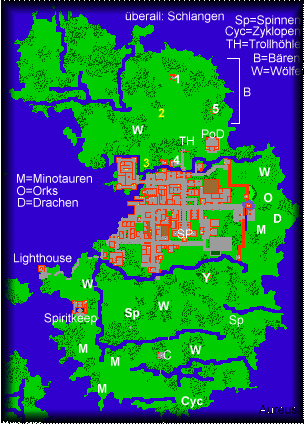dwo8C5z2
Joined: 10 Feb 2011
Posts: 1707
Read: 0 topics
Warns: 0/5
Location: England
|
 Posted: Fri 19:39, 25 Mar 2011 Post subject: Hummingbird Migration…….On the Backs of Posted: Fri 19:39, 25 Mar 2011 Post subject: Hummingbird Migration…….On the Backs of |
|
|
In a personal style, I dispute the once common myth that hummingbirds migrate on the backs of Canadian Geese. I supply a number of facts about hummingbird migration that prove this folklore untrue. In conclusion, I point out this charming tale may have its roots in our hearts with our love of hummingbirds.
I can remember sitting on the calico apron of my grandmother’s lap watching the Ruby-throated hummingbird feed on the brightly colored flowers in her garden. I felt safe and secure; together we were so enchanted by the tiny bird stopping briefly to sip the nectar. Its wings moved so fast they seemed almost magically to disappear. The warm softness of my grandmother’s voice still echoes each time I watch the many hummingbirds visiting my own garden and feeders today. “The tiny hummingbird needs to go a long way south for the winter to live where it is warm. Then it comes back here to the north to live in my garden in the summer. It is so small and needs to hitchhike a ride on a bigger bird called a Canadian goose”, she would explain. Each summer my grandmother enjoyed telling me this marvelous tale as much as I adored the woman who told it. Perhaps,[link widoczny dla zalogowanych], she was only repeating a story that had been told by someone close to her. I didn’t care. The hummingbird was a wonder to watch as I snuggled close to my dear grandmother.
As I matured, the tale of the Ruby-throated hummingbird migration became just as much of an amazement as the incredible creature itself. Was this a merely persistent folklore but why did it originate?
Did hummingbirds really migrate on the backs of geese? Wouldn’t they need to fly low in order to obtain food sources for the trip? By now, I thought, scientists must have tracked the migration. Perhaps, fishermen and hummingbird enthusiasts had personal observation accounts that would be more reliable.
As it turns out, the Ruby-throated hummingbird migration is not documented very well. Scientists do not have radio transmitters small enough for the tiny hummingbird to wear. Efforts are made to track the migration by banding (wrapping a strip of aluminum around a leg.) Fishermen and others have reported seeing hummingbirds skimming lowly over ocean waves. Many people have observed hummingbirds. We know that they do not fly very high during migration. Canadian geese fly a much as 20,000 feet high in the air. Besides, it is a well known fact that Canadian geese do not end up in the tropics. They migrate only as far south as the shores of the Carolinas. So there flies the myth that these tiny birds hitchhike south on the backs of Canadian Geese. Ruby-throated hummingbirds need to be able to see food sources along the land route stopping along the way for a good meal at our feeders and flowers. You are lucky if you live along a migration route. So don’t take down your feeders too soon. A poor hungry hummingbird might be disappointed. Usually, they do not fly higher than many rooftops and trees. Over water, such as the ocean, these iridescent birds fly extremely low, often flying just above the waves. Canadian gees fly as high as 20,000 feet.Besides that, hummingbirds migrate alone not in flocks. To add to this, the male hummingbird begins his migration several weeks ahead of the female or young males.This enables him the best choice of territory to attract the female soon to follow. In addition, the females and younger males will find more food during the later flight.
The Ruby-throated hummingbird flies from as far north as Southern Canada all the way to southern Mexico and Central America, including the remarkable 300 mile and 20 hour non-stop flight across the Gulf of Mexico.
The persistence of this folktale has never been explained. Perhaps some tender-hearted hummingbird lovers, like my sweet grandmother had hoped for a softer ride for these miniature wonders of nature. Maybe, the remarkable journey seemed too difficult for this delicate bird. So the story of the migration on the backs of geese was probably invented to solve a mystery. It continues today, if only in the hearts of those like myself who hold dear precious memories of afternoons spent watching the pretty little hummingbird on the laps of our dear sweet grandmothers.
The post has been approved 0 times
|
|


